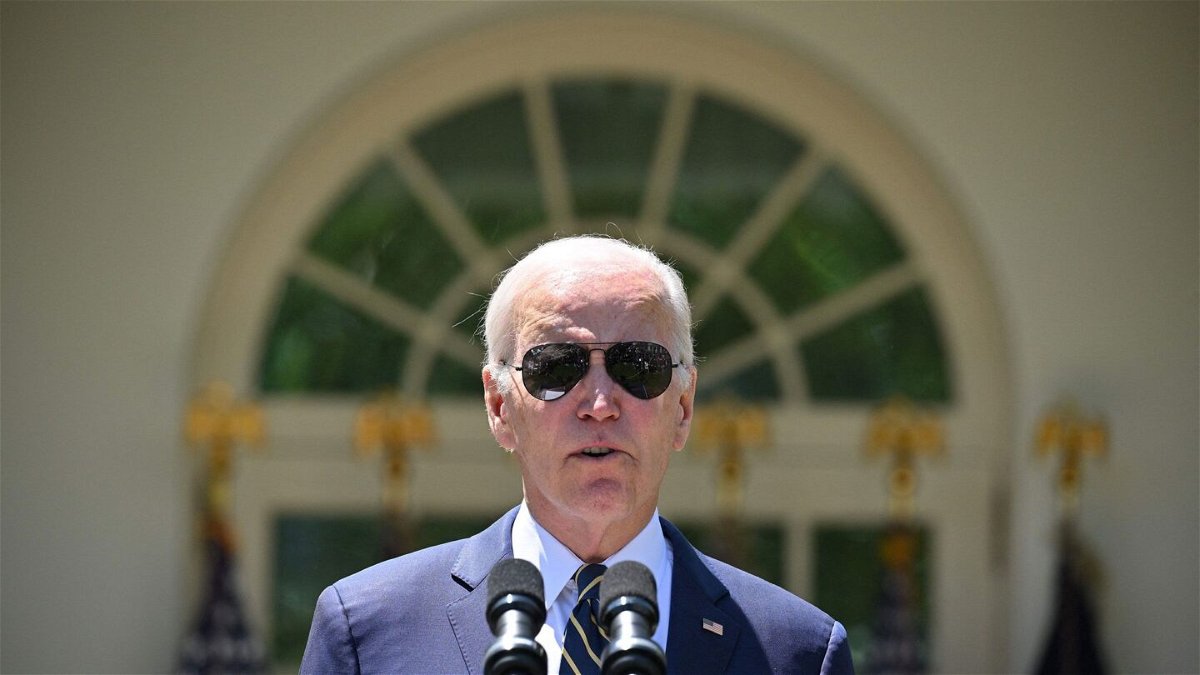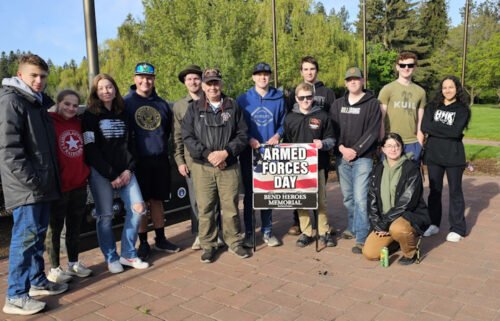Biden holding firm on Ukraine joining NATO

President Joe Biden
By Kevin Liptak and Jennifer Hansler, CNN
(CNN) — President Joe Biden and his team are in the midst of a high-stakes conversation with fellow NATO members on how and when Ukraine may join – a debate that could expose strains in the alliance ahead of a key summit.
The matter of Ukrainian membership in NATO is one of several issues leaders will tackle when they meet in the Lithuanian capital Vilnius in mid-July. Also up for discussion are new defense spending commitments and a successor to Secretary General Jens Stoltenberg, who is planning on leaving his post in the autumn.
Yet it is the issue of Ukrainian membership that will prove one of the biggest flash points for the group, which has managed to remain remarkably united amid Russia’s unprovoked invasion.
At past NATO summits, the allies have produced a joint declaration outlining their shared views. A failure to reach a consensus this year would be hugely consequential and would signal trouble for the unity of the alliance as the war in Ukraine continues.
Some allies, particularly those in Eastern Europe who are located closer to Ukraine and Russia, have advocated for a more concrete path for Kyiv to join the defensive alliance once the war ends.
Other European officials, particularly those in western and southern Europe, have argued an expedited entrance of Ukraine into NATO could be too provocative and that it could amount to an extremely risky gamble for the alliance even if there is an end to the fighting, particularly if Russia still stakes claim over Ukrainian territory.
Biden and members of his administration have remained committed to the alliance’s current posture, which states Ukraine will eventually join NATO but without any certainty of when.
The divide has prompted urgent discussions ahead of the summit. The result of the conversations could determine whether Ukrainian President Volodymyr Zelensky attends.
“If we are not acknowledged and given a signal in Vilnius, I believe there is no point for Ukraine to be at this summit,” he told the Wall Street Journal earlier this month.
The invasion and its aftermath have increased pressure on all NATO members to provide Ukraine some type of security guarantee going forward, even as there remains disagreement on exactly what they might look like.
“At the Vilnius summit, we will send a strong message of support and solidarity with Ukraine. And make clear that Ukraine’s future is in NATO,” Stoltenberg said at a news conference Wednesday, a day after meeting Biden at the White House.
Stoltenberg said he expected member states to agree on a “multi-year program where we help to move Ukraine to transition from old standards, equipment, procedures, doctrines to NATO standards and become fully interoperable with NATO.” Those steps, he said, would bring “Ukraine closer to NATO.”
But he acknowledged that consultations among the group were still ongoing in the lead-up to the summit.
Ukraine’s ambitions of joining NATO predate both Russia’s invasion last year and its annexation of Crimea in 2014. The group agreed in 2008 to allow for eventual membership – a so-called “open door policy” – yet governance issues, including persistent corruption, have prevented it from joining the alliance.
In his first year in office, Biden made clear that many of those issues would need to be resolved before entertaining the prospect of Kyiv becoming a NATO member.
“The fact is they still have to clean up corruption and the fact is they have to meet other criteria to get into the action plan,” he said in June 2021, declaring “school’s out” on the question of whether Ukraine could join the organization.
Russia’s invasion the following February provided a dramatic illustration of Ukraine’s security fears and prompted Zelensky to renew his calls for full membership in NATO.
It also helped make Ukraine one of the most heavily armed countries in Europe, with systems and equipment drawn mostly from NATO nations, furthering an argument for membership within the alliance.
Yet full membership for Ukraine comes with significant complications. Under the organization’s Article 5 commitments, an attack on one member is an attack against all, committing the entire bloc to a collective military response. And while Biden has provided tens of billions of dollars in ever-more-advanced military equipment, he has remained firmly opposed to sending American troops into the country into direct conflict with Russia.
Biden has similarly demonstrated caution on steps that could provoke an escalation by Russian President Vladimir Putin, who views an eastward expansion by NATO as an encroachment on Russian influence.
In recent months, Biden administration officials have emphasized their commitment to the Bucharest Summit declaration – the 2008 agreement that welcomed Ukraine’s aspirations to join NATO – but have suggested that the focus should be on the practical support to Kyiv for the war with Russia.
“Every ally stands by Bucharest. There is no division on that proposition,” US Secretary of State Antony Blinken said at a news conference in Oslo following an informal meeting of NATO foreign ministers in early June.
The White House said this week their stance on Ukraine’s NATO membership hadn’t changed.
“We obviously still support NATO’s open-door policy. And those are discussions that have to be had with all 31 allies and, of course, the nation in question here. So, we’re not taking a position one way or another,” National Security Council spokesman John Kirby said. “I think you know that at Bucharest there was a declaration that made very clear that NATO should be in Ukraine’s future at some point in the future. Nothing has changed about that.”
However, senior US officials have acknowledged that “there’s a spectrum of opinion” among NATO allies on the path for Ukrainian membership to NATO.
“I think the best way to describe it is there’s a rich conversation going on across the alliance with a whole array of views,” US Ambassador to NATO Julianne Smith said Wednesday.
“This is not a situation where the entire alliance has agreed language for how to describe Ukraine’s membership aspirations, and there’s one or two countries that stand outside of that group in opposition. We are having, and we have had, a series of conversations where allies are looking at both an array of concrete deliverables and an array of options for describing their membership aspirations,” she said.
Among NATO countries bordering Ukraine or Russia, there is a stronger push for a commitment to extend membership to Ukraine, including providing a more concrete timetable.
“For the continent of Europe to be safe, the steps on Ukraine’s path to NATO must be clearly defined and fully agreed. (Fifteen) years of vague promises must end with a firm commitment, including protecting Ukraine while we take those steps,” Lithuanian Foreign Minister Gabrielius Landsbergis tweeted last week.
Some European diplomats have argued the only true deterrent for Russia is the threat of triggering NATO’s collective defense agreement and that medium- and longer-term deterrence will not be sufficient to stop Putin from trying to take Ukraine again, even if he fails on the battlefield this time around.
Other nations, including Germany, have voiced concern at the risks full membership for Ukraine would entail. And most diplomats involved in discussions in the lead-up to the Lithuania summit acknowledge the security assurances provided by the alliance will stop short of a full Article 5 commitment of collective defense.
One European diplomat told CNN the United States may be willing to drop the language about the Membership Action Plan, which the Bucharest declaration described as “the next step for Ukraine … on their direct way to membership.” CNN has asked the National Security Council for comment on the diplomat’s suggestion.
And other diplomats raised the possibility of establishing an urgent consultation mechanism with Ukraine, another benefit of NATO membership that stops short of drawing other nations directly into the conflict.
There is strong consensus among lawmakers in Europe about the need for leaders to create a clear path for Ukraine. A letter from early June calling for such a move at the Vilnius Summit was signed by the Foreign Affairs Committee chairs from 22 nations, including US House Foreign Affairs Committee Chairman Rep. Michael McCaul.
The-CNN-Wire
™ & © 2023 Cable News Network, Inc., a Warner Bros. Discovery Company. All rights reserved.



